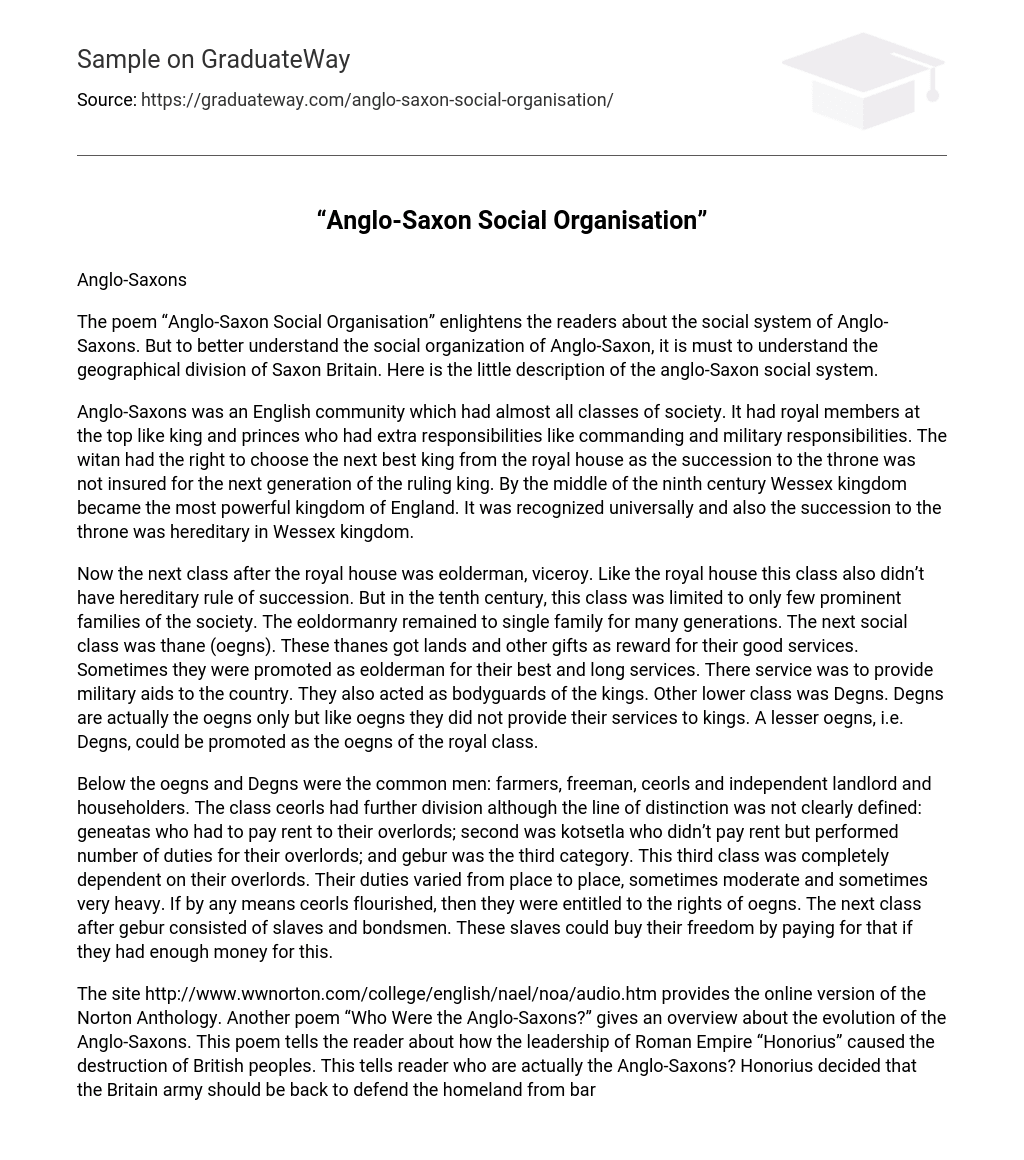Anglo-Saxons
The poem “Anglo-Saxon Social Organisation” enlightens the readers about the social system of Anglo-Saxons. But to better understand the social organization of Anglo-Saxon, it is must to understand the geographical division of Saxon Britain. Here is the little description of the anglo-Saxon social system.
Anglo-Saxons was an English community which had almost all classes of society. It had royal members at the top like king and princes who had extra responsibilities like commanding and military responsibilities. The witan had the right to choose the next best king from the royal house as the succession to the throne was not insured for the next generation of the ruling king. By the middle of the ninth century Wessex kingdom became the most powerful kingdom of England. It was recognized universally and also the succession to the throne was hereditary in Wessex kingdom.
Now the next class after the royal house was eolderman, viceroy. Like the royal house this class also didn’t have hereditary rule of succession. But in the tenth century, this class was limited to only few prominent families of the society. The eoldormanry remained to single family for many generations. The next social class was thane (oegns). These thanes got lands and other gifts as reward for their good services. Sometimes they were promoted as eolderman for their best and long services. There service was to provide military aids to the country. They also acted as bodyguards of the kings. Other lower class was Degns. Degns are actually the oegns only but like oegns they did not provide their services to kings. A lesser oegns, i.e. Degns, could be promoted as the oegns of the royal class.
Below the oegns and Degns were the common men: farmers, freeman, ceorls and independent landlord and householders. The class ceorls had further division although the line of distinction was not clearly defined: geneatas who had to pay rent to their overlords; second was kotsetla who didn’t pay rent but performed number of duties for their overlords; and gebur was the third category. This third class was completely dependent on their overlords. Their duties varied from place to place, sometimes moderate and sometimes very heavy. If by any means ceorls flourished, then they were entitled to the rights of oegns. The next class after gebur consisted of slaves and bondsmen. These slaves could buy their freedom by paying for that if they had enough money for this.
The site http://www.wwnorton.com/college/english/nael/noa/audio.htm provides the online version of the Norton Anthology. Another poem “Who Were the Anglo-Saxons?” gives an overview about the evolution of the Anglo-Saxons. This poem tells the reader about how the leadership of Roman Empire “Honorius” caused the destruction of British peoples. This tells reader who are actually the Anglo-Saxons? Honorius decided that the Britain army should be back to defend the homeland from barbarian attacks. The Anglo-Saxons were the invaders to Britain during 5th and 6th centuries after the destruction of Roman Empire. Most of the information about Anglo-Saxons we can get from Anglo-Saxons from Anglo-Saxons chronicle, a year by year account of the events.
The next poem “The Village of Wichamstow” tells the reader about this virtual village. It was situated along the river Fisclacu. Peoples were craftsmen as well as landlords who used their lands for agriculture purpose to grow their own food. The way of travelling was through boat or ship.
All these three poems enlightens the reader about the history of Anglo-Saxons, their culture, their villages, their occupations, and much more.





